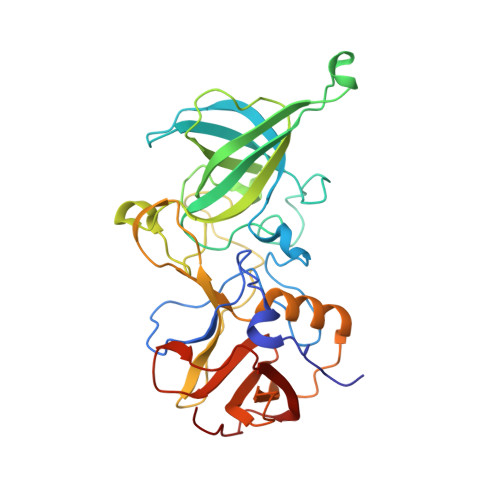The sweet quartet: Binding of fucose to the norovirus capsid.
Koromyslova, A.D., Leuthold, M.M., Bowler, M.W., Hansman, G.S.(2015) Virology 483: 203-208
- PubMed: 25980740
- DOI: https://doi.org/10.1016/j.virol.2015.04.006
- Primary Citation of Related Structures:
4Z4R, 4Z4S, 4Z4T, 4Z4U, 4Z4V, 4Z4W, 4Z4Y, 4Z4Z - PubMed Abstract:
Human noroviruses bind histo-blood group antigens (HBGAs) and this interaction is thought to be important for an infection. We identified two additional fucose-binding pockets (termed fucose-3/4 sites) on a genogroup II human (GII.10) norovirus-protruding (P) dimer using X-ray crystallography. Fucose-3/4 sites were located between two previously determined HBGA binding pockets (termed fucose-1/2 sites). We found that four fucose molecules were capable of binding altogether at fucose-1/2/3/4 sites on the P dimer, though the fucose molecules bound in a dose-dependent and step-wise manner. We also showed that HBGA B-trisaccharide molecules bound in a similar way at the fucose-1/2 sites. Interestingly, we discovered that the monomers of the P dimer were asymmetrical in an unliganded state and when a single B-trisaccharide molecule bound, but were symmetrical when two B-trisaccharide molecules bound. We postulate that the symmetrical dimers might favor HBGA binding interactions at fucose-1/2 sites.
- Schaller Research Group at the University of Heidelberg and the DKFZ, Heidelberg 69120, Germany; Department of Infectious Diseases, Virology, University of Heidelberg, Heidelberg 69120, Germany.
Organizational Affiliation:


















